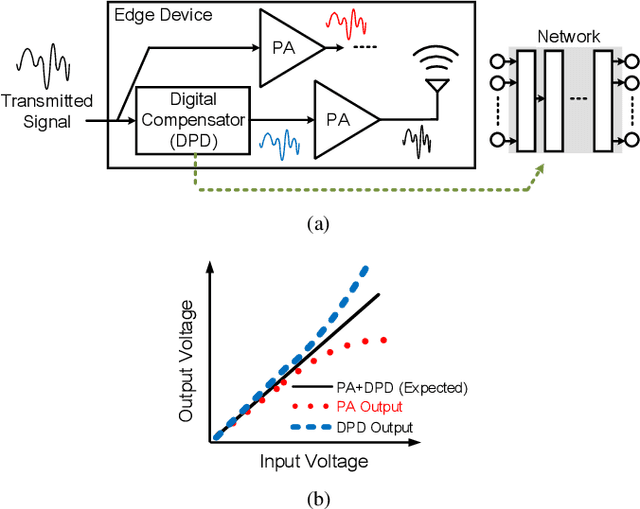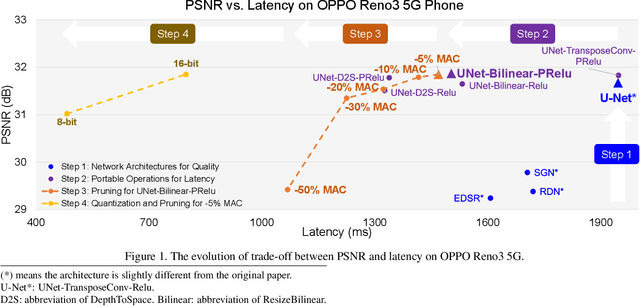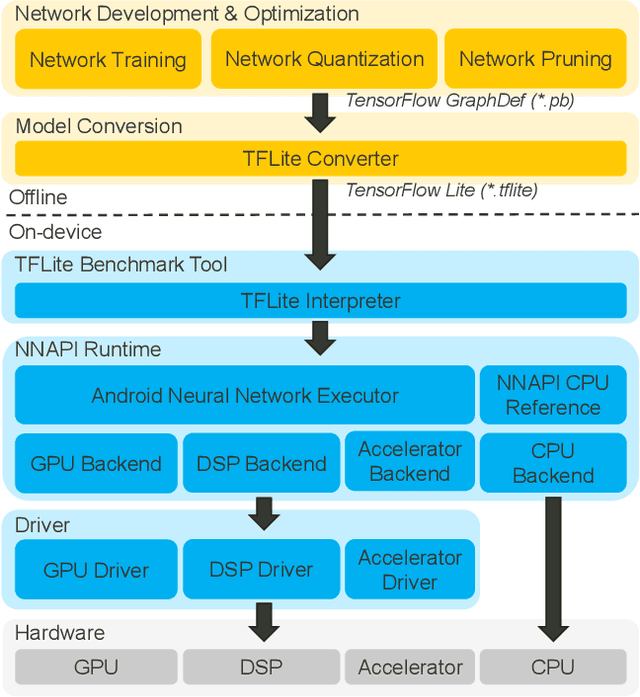Chia-Ming Cheng
MicroISP: Processing 32MP Photos on Mobile Devices with Deep Learning
Nov 08, 2022



Abstract:While neural networks-based photo processing solutions can provide a better image quality compared to the traditional ISP systems, their application to mobile devices is still very limited due to their very high computational complexity. In this paper, we present a novel MicroISP model designed specifically for edge devices, taking into account their computational and memory limitations. The proposed solution is capable of processing up to 32MP photos on recent smartphones using the standard mobile ML libraries and requiring less than 1 second to perform the inference, while for FullHD images it achieves real-time performance. The architecture of the model is flexible, allowing to adjust its complexity to devices of different computational power. To evaluate the performance of the model, we collected a novel Fujifilm UltraISP dataset consisting of thousands of paired photos captured with a normal mobile camera sensor and a professional 102MP medium-format FujiFilm GFX100 camera. The experiments demonstrated that, despite its compact size, the MicroISP model is able to provide comparable or better visual results than the traditional mobile ISP systems, while outperforming the previously proposed efficient deep learning based solutions. Finally, this model is also compatible with the latest mobile AI accelerators, achieving good runtime and low power consumption on smartphone NPUs and APUs. The code, dataset and pre-trained models are available on the project website: https://people.ee.ethz.ch/~ihnatova/microisp.html
PyNet-V2 Mobile: Efficient On-Device Photo Processing With Neural Networks
Nov 08, 2022Abstract:The increased importance of mobile photography created a need for fast and performant RAW image processing pipelines capable of producing good visual results in spite of the mobile camera sensor limitations. While deep learning-based approaches can efficiently solve this problem, their computational requirements usually remain too large for high-resolution on-device image processing. To address this limitation, we propose a novel PyNET-V2 Mobile CNN architecture designed specifically for edge devices, being able to process RAW 12MP photos directly on mobile phones under 1.5 second and producing high perceptual photo quality. To train and to evaluate the performance of the proposed solution, we use the real-world Fujifilm UltraISP dataset consisting on thousands of RAW-RGB image pairs captured with a professional medium-format 102MP Fujifilm camera and a popular Sony mobile camera sensor. The results demonstrate that the PyNET-V2 Mobile model can substantially surpass the quality of tradition ISP pipelines, while outperforming the previously introduced neural network-based solutions designed for fast image processing. Furthermore, we show that the proposed architecture is also compatible with the latest mobile AI accelerators such as NPUs or APUs that can be used to further reduce the latency of the model to as little as 0.5 second. The dataset, code and pre-trained models used in this paper are available on the project website: https://github.com/gmalivenko/PyNET-v2
Power Efficient Video Super-Resolution on Mobile NPUs with Deep Learning, Mobile AI & AIM 2022 challenge: Report
Nov 07, 2022



Abstract:Video super-resolution is one of the most popular tasks on mobile devices, being widely used for an automatic improvement of low-bitrate and low-resolution video streams. While numerous solutions have been proposed for this problem, they are usually quite computationally demanding, demonstrating low FPS rates and power efficiency on mobile devices. In this Mobile AI challenge, we address this problem and propose the participants to design an end-to-end real-time video super-resolution solution for mobile NPUs optimized for low energy consumption. The participants were provided with the REDS training dataset containing video sequences for a 4X video upscaling task. The runtime and power efficiency of all models was evaluated on the powerful MediaTek Dimensity 9000 platform with a dedicated AI processing unit capable of accelerating floating-point and quantized neural networks. All proposed solutions are fully compatible with the above NPU, demonstrating an up to 500 FPS rate and 0.2 [Watt / 30 FPS] power consumption. A detailed description of all models developed in the challenge is provided in this paper.
Learning to Compensate: A Deep Neural Network Framework for 5G Power Amplifier Compensation
Jun 15, 2021



Abstract:Owing to the complicated characteristics of 5G communication system, designing RF components through mathematical modeling becomes a challenging obstacle. Moreover, such mathematical models need numerous manual adjustments for various specification requirements. In this paper, we present a learning-based framework to model and compensate Power Amplifiers (PAs) in 5G communication. In the proposed framework, Deep Neural Networks (DNNs) are used to learn the characteristics of the PAs, while, correspondent Digital Pre-Distortions (DPDs) are also learned to compensate for the nonlinear and memory effects of PAs. On top of the framework, we further propose two frequency domain losses to guide the learning process to better optimize the target, compared to naive time domain Mean Square Error (MSE). The proposed framework serves as a drop-in replacement for the conventional approach. The proposed approach achieves an average of 56.7% reduction of nonlinear and memory effects, which converts to an average of 16.3% improvement over a carefully-designed mathematical model, and even reaches 34% enhancement in severe distortion scenarios.
Deploying Image Deblurring across Mobile Devices: A Perspective of Quality and Latency
Apr 27, 2020



Abstract:Recently, image enhancement and restoration have become important applications on mobile devices, such as super-resolution and image deblurring. However, most state-of-the-art networks present extremely high computational complexity. This makes them difficult to be deployed on mobile devices with acceptable latency. Moreover, when deploying to different mobile devices, there is a large latency variation due to the difference and limitation of deep learning accelerators on mobile devices. In this paper, we conduct a search of portable network architectures for better quality-latency trade-off across mobile devices. We further present the effectiveness of widely used network optimizations for image deblurring task. This paper provides comprehensive experiments and comparisons to uncover the in-depth analysis for both latency and image quality. Through all the above works, we demonstrate the successful deployment of image deblurring application on mobile devices with the acceleration of deep learning accelerators. To the best of our knowledge, this is the first paper that addresses all the deployment issues of image deblurring task across mobile devices. This paper provides practical deployment-guidelines, and is adopted by the championship-winning team in NTIRE 2020 Image Deblurring Challenge on Smartphone Track.
 Add to Chrome
Add to Chrome Add to Firefox
Add to Firefox Add to Edge
Add to Edge